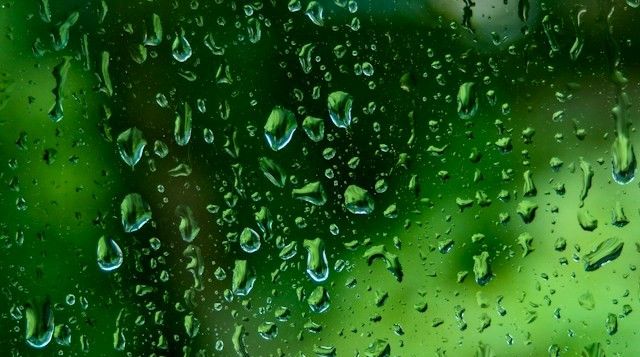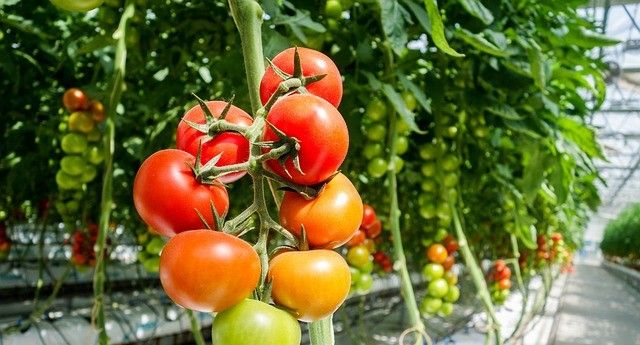As average global temperatures continue to rise, every manufacturing sector is focused on sustainability and lowering carbon emissions.
For some sectors this has become a golden opportunity to not only lessen humankind’s impact on the environment, but also to reap the financial benefits of a public that is increasingly looking for eco-friendly products.
The horticultural sector, for example, is happy to promote the fact that it can now supply vegetables all year round with a lower carbon footprint by using modern glass and renewable heating sources. Not only does this reduce the food miles (no more transporting tomatoes or cucumbers from warmer countries far away), but modern horticultural glass is now better at trapping the heat from the winter sun, which reduces heating costs.

One example of this effect which has been in the news recently involved the dismantling of an old glass structure that was used to grow fresh produce, such as cucumbers and tomatoes. A project which was a cooperation between Pilkington UK, one of the leading glass producers in Europe, and greenhouse project company CambridgeHOK.
“We are a site that’s focusing on renewables, solar is our main source of power, we are also capturing the rainwater conditioning it and reusing throughout the growing process,” explains the greenhouse site owner. “Currently our mission is to replace our existing glass with new energy efficient panes. But whilst we are busy with the new it’s great to learn our old glass house is being transformed into something great.”
The glass that would have otherwise ended up in a landfill (almost 200 tonnes of it from just one site) is now being remelted and used to create new types of greenhouse glass.
“Glass is an amazingly sustainable material, as it can be continually re-melted and recycled into new products without reducing quality,” explains Anna Colley, the Lead Technologist at NSG, one of the world’s largest glass manufacturers. “Sadly, much of this glass ends up in landfill. Pilkington Botanical envisage a future where greenhouses that have come to end of their useful life are taken down, collected and remelted into the next generation of higher performance greenhouse glass.”

The process of making glass is extremely demanding on the environment since raw materials must melt at temperatures as high as 1600°C. Given that glass recycling uses less energy than manufacturing virgin glass, then this 10,000 m2 project has created a CO2 saving of more than 50 tonnes.
“The project has not been without its challenges and has proved very useful learning,” explains John Armstrong, Logistics, Warehouse & Quality Systems Manager. “Typically, the float and rolled glass processes, which produce most of the world’s flat glass, run continually for 10-15 years. Careful monitoring is therefore required of any materials entering the furnace and small amounts of contaminants can have potentiality catastrophic implications on glass production.”
While this project was only experimental, it ran in addition to other pioneering efforts to reduce fossil fuel usage in the glass industry. As a recent press release from Pilkington UK announced, “Last year, Pilkington UK completed the world’s first trial of sustainable biofuel made from organic waste materials. The glass produced had an approximately 40% lower total embodied CO₂/tonne of glass melted vs standard glass produced on the float glass furnace using traditional natural gas.” Noting that, “The biofuel trial created 165,000 m2 of the lowest carbon float glass ever made.”
To the man on the street, such savings may sound like only a small advance in a niche market, but the ramifications of the better use of raw materials can be far-reaching.

By the year 2100, the UN predicts that the global population will reach almost 11 billion. Feeding so many more mouths will require a 70% increase in global food production. Ninety percent of this additional production is expected to come from optimizing crop growth practices and intensifying our current crop yield. In the United Kingdom, greenhouses currently occupy 30 m2 million, yet much more will be needed if the fruits and vegetables grown abroad are needed to feed their own domestic populations. Already the market for indoor farming is growing, with 9% more produce to be grown by 2027 in the UK alone. In order to meet the increasing demand for food, new and more effective glasshouses will be required from sustainable raw materials and low-energy glass production processes.
Overall, the goal of glass manufacturers for the horticultural sector is to provide a more sustainable product. Doing so helps the environment in many different ways, such as reducing water usage, helping to provide fresh produce with a low carbon footprint, using sustainable fuels in production, improving greenhouse energy efficiency, maximizing the range of crops that can be cultivated in temperate climates, and reserving fertile land for other uses.
Recycling old glass as a feedstock can now be added to the list of ways that the glass manufacturing industry can help save the planet.
Photo credit: Thetravelnook from Pixabay, Davehan2016, Ananth Pia on Unsplash, & Lucas Van Oort